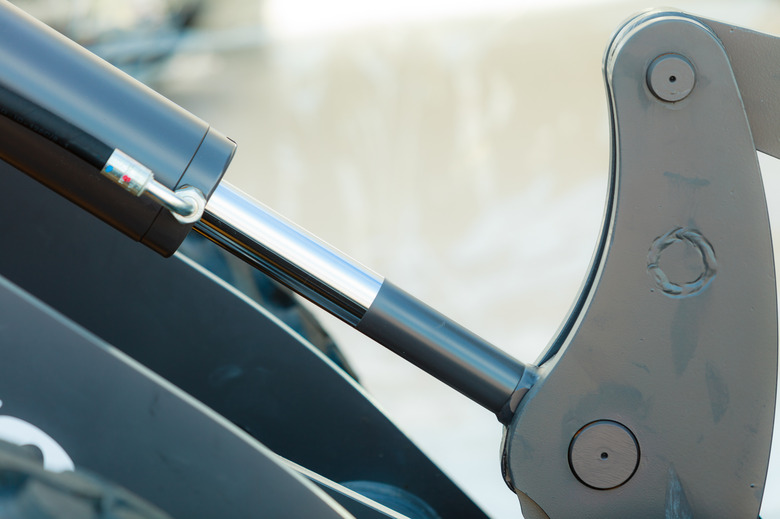How To Calculate Hydraulic Press Force In Tons
Hydraulic presses can exert many thousands of pounds of force, making them useful for industrial operations such as forming metal parts. You typically measure hydraulic pressure in pounds per square inch (psi), which is force per unit area. To calculate the force produced, multiply the pressure by the area of the hydraulic cylinder's piston in square inches. This will give you the force in pounds, which you can easily convert into tons.
TL;DR (Too Long; Didn't Read)
To calculate hydraulic press force, first find piston area from piston diameter. Then multiply the pressure in psi by cylinder area in inches. Divide force in pounds by 2,000 to get force in tons.
Gather the Data
Gather the Data
Reference the necessary data, such as psi and cylinder piston diameter or area. Look for this information in the hydraulic press's specification sheet.
Calculate Piston Area
Calculate Piston Area
Calculate the area of the cylinder piston, if you can't find it on the specification sheet. Use the formula: Area equals 3.14 times the square of the diameter, divided by four.
As an example, if the piston diameter is 4 inches, then you would multiply 3.14 times 4 inches times 4 inches, divided by 4. Therefore, the area is 12.56 square inches.
Calculate Force in Pounds
Calculate Force in Pounds
Multiply the pressure rating, in psi, by the area. In the example, if the press offered 2,500 psi, then you would multiply 2,500 by 12.56. This gives you 31,400 pounds.
Convert Pounds to Tons
Convert Pounds to Tons
Divide the number of pounds by 2,000 to convert to tons. In the example, 31,400 divided by 2,000 gives you a force of 15.7 standard tons.
If you wish to convert to metric tons, you would divide by 2,205. In the example, 31,400 divided by 2,205 gives you a force of 14.24 metric tons.
References
Cite This Article
MLA
Taylor, C.. "How To Calculate Hydraulic Press Force In Tons" sciencing.com, https://www.sciencing.com/calculate-hydraulic-press-force-tons-7603026/. 10 May 2018.
APA
Taylor, C.. (2018, May 10). How To Calculate Hydraulic Press Force In Tons. sciencing.com. Retrieved from https://www.sciencing.com/calculate-hydraulic-press-force-tons-7603026/
Chicago
Taylor, C.. How To Calculate Hydraulic Press Force In Tons last modified March 24, 2022. https://www.sciencing.com/calculate-hydraulic-press-force-tons-7603026/
